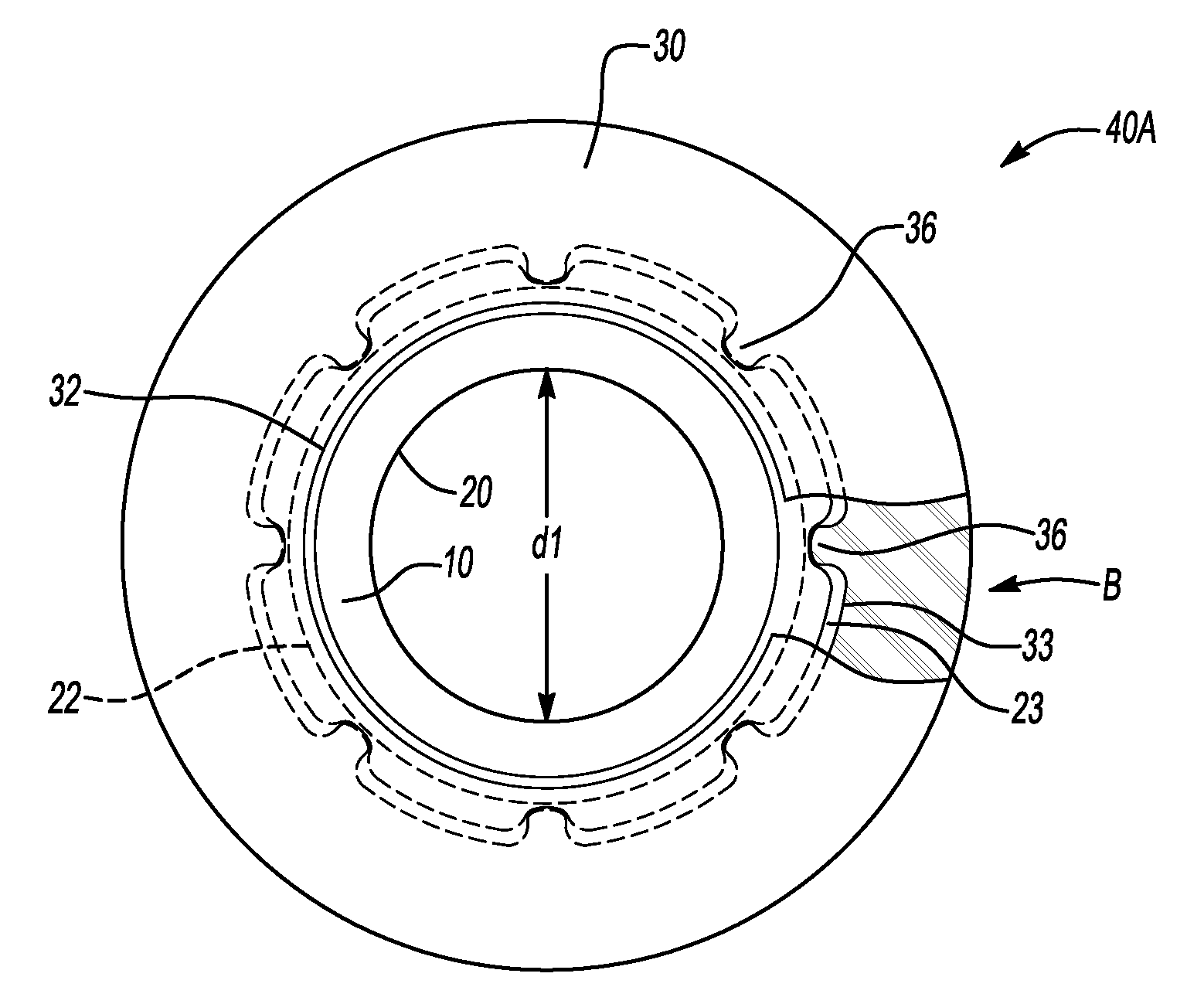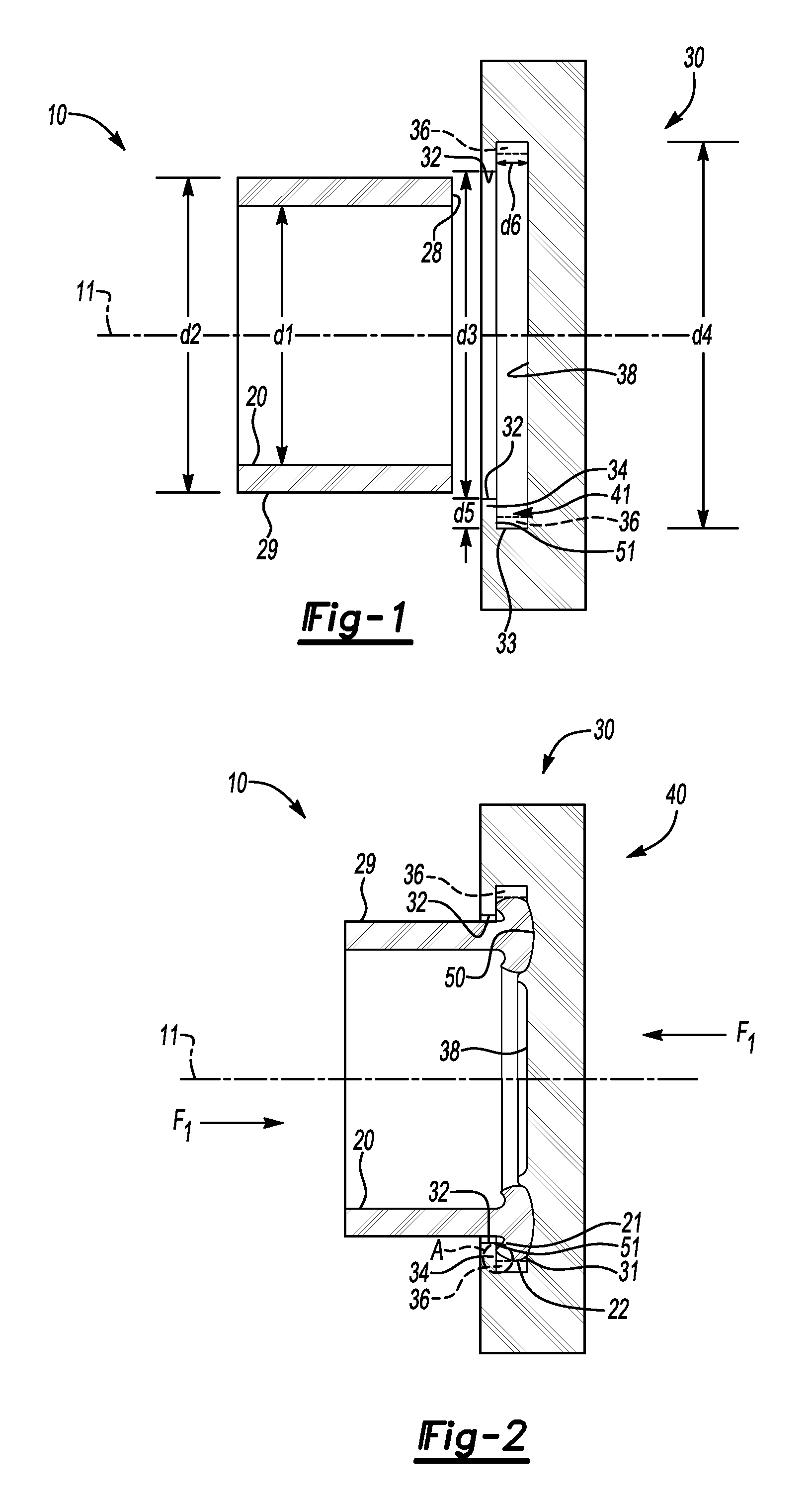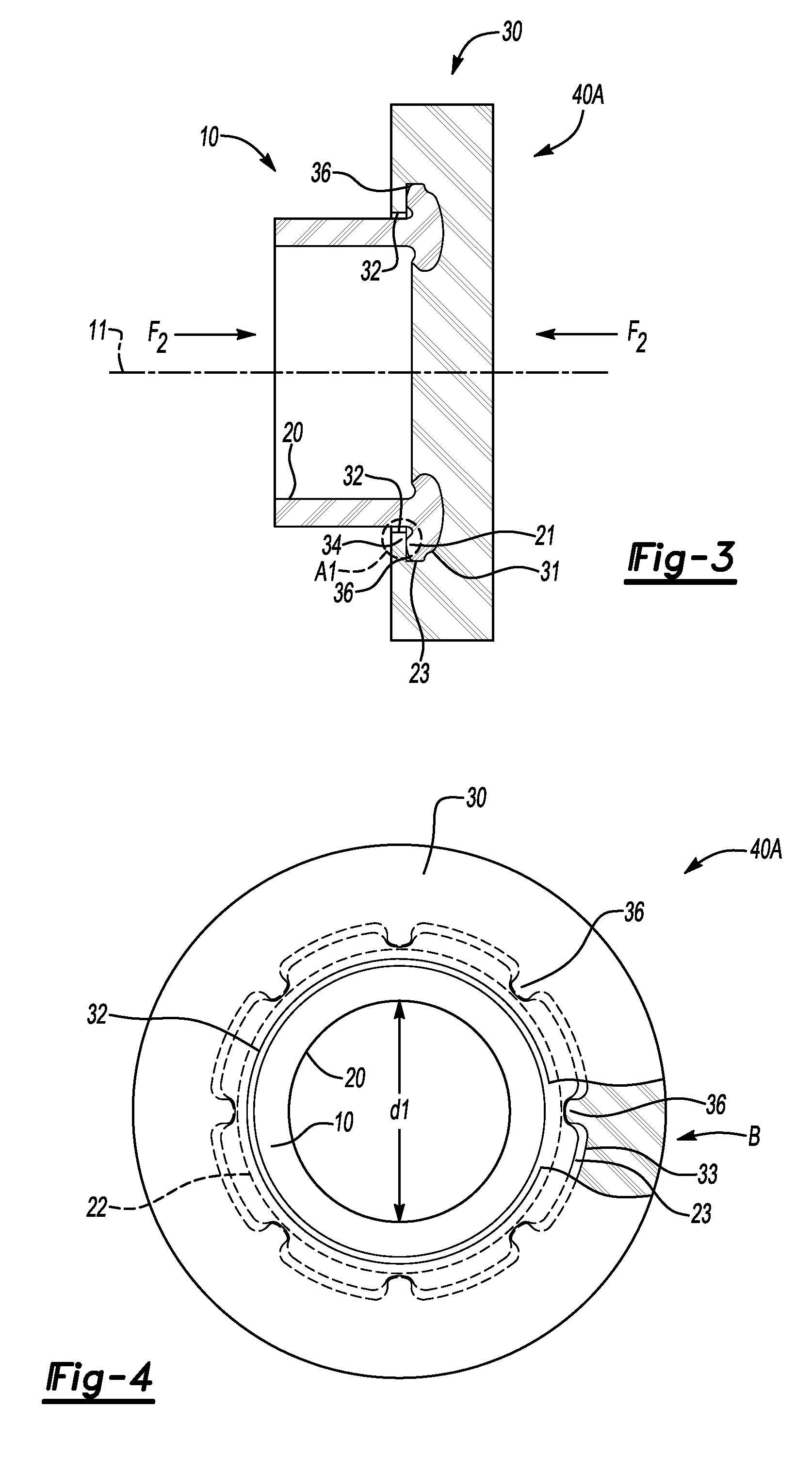Friction-Welded Assembly with Interlocking Feature and Method for Forming the Assembly
a technology of interlocking feature and friction welding, which is applied in the direction of manufacturing tools, transportation and packaging, other domestic articles, etc., can solve the problems that the bonding strength and long-term durability of the weld joint formed via a conventional spin-welding process may be less than optimal
- Summary
- Abstract
- Description
- Claims
- Application Information
AI Technical Summary
Benefits of technology
Problems solved by technology
Method used
Image
Examples
Embodiment Construction
[0013]Referring to the drawings wherein like reference numbers represent like components throughout the several figures, and beginning with FIG. 1, a first component 10 and a second component 30 are shown as they appear prior to being subjected to a friction-welding or a spin-welding process in accordance with the invention, as will be described below. The first component 10 is shown in one embodiment as a tube or a cylinder, and the second component 30 is shown as a disc. As such a configuration is most typically used during a conventional spin-welding process, for simplicity the first and second components will be referred to respectively hereinafter as the cylinder 10 and the disc 30.
[0014]In one embodiment, the cylinder 10 and disc 30 are each constructed of the same or different types of suitable metal, such as an aluminum alloy, cast iron, or another suitable metal material. In another embodiment, the cylinder 10 and the disc 30 are each constructed of the same or different ty...
PUM
| Property | Measurement | Unit |
|---|---|---|
| axial force | aaaaa | aaaaa |
| speed | aaaaa | aaaaa |
| axial compressive force | aaaaa | aaaaa |
Abstract
Description
Claims
Application Information
 Login to View More
Login to View More - R&D
- Intellectual Property
- Life Sciences
- Materials
- Tech Scout
- Unparalleled Data Quality
- Higher Quality Content
- 60% Fewer Hallucinations
Browse by: Latest US Patents, China's latest patents, Technical Efficacy Thesaurus, Application Domain, Technology Topic, Popular Technical Reports.
© 2025 PatSnap. All rights reserved.Legal|Privacy policy|Modern Slavery Act Transparency Statement|Sitemap|About US| Contact US: help@patsnap.com



